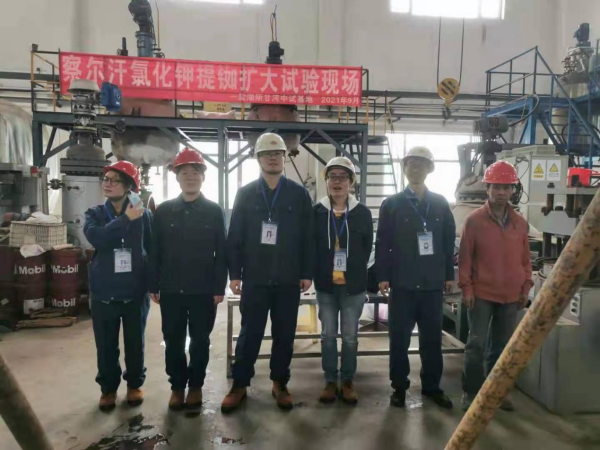Recently, the Electrochemical Separation Technology Research Group at the Qinghai Institute of Salt Lakes (CAS) has achieved new progress in the economical utilization of ultra-low-grade rubidium resources from the Chaerhan Salt Lake. Addressing the shortage of supply for China's strategic critical metal rubidium, the research team conducted theoretical and technological innovations in extracting rubidium from salt lakes to produce high-purity rubidium chloride (RbCl).
Theoretical Innovations:
· Constructed a multi-phase equilibrium thermodynamic model for rubidium-containing double salt solid solutions, elucidating the migration and enrichment patterns of rubidium during potash production.
· Revealed that the formation of double salt solid solutions is the key constraint preventing rubidium enrichment in tail brine.
· Through model calculations and experimental verification, identified carnallite decomposition mother liquor and crude potassium chloride (KCl) as the optimal process nodes for rubidium enrichment, providing theoretical guidance for efficient rubidium separation and extraction.
· The established model enables precise prediction of the distribution behavior of trace rubidium (ppm level) between complex brine systems and salt minerals, forming a novel methodology for studying trace element occurrence states in salt lakes.
Technological Innovations:
· Developed an integrated process route: "Ore Washing-Rubidium Leaching → Evaporation & Enrichment → Solvent Extraction → Crystallization & Purification".
· Successfully prepared rubidium chloride products (99.9% purity) from Chaerhan potassium chloride raw materials with extremely low rubidium content (<0.001%) through kilogram-scale amplification experiments and ton-scale engineering verification.
· Achieved economical extraction and high-quality utilization of ultra-low-grade rubidium resources in chloride-type salt lakes.
This achievement represents a significant technological breakthrough in the development and utilization of rubidium resources at the Chaerhan Salt Lake. Its innovative theoretical model and process route provide a demonstration for the scientific exploitation of similar rubidium resources in salt lakes globally, holding great significance for safeguarding China's critical mineral resource security.
This research was supported by the National Natural Science Foundation of China (Joint Fund), relevant talent recruitment and cultivation programs of the Chinese Academy of Sciences (CAS), and the Basic Research Program of the Qinghai Provincial Department of Science and Technology.

Research team
